Collecting Ancient Roman Coins Part I: An Introduction.
Collecting Ancient Roman Coins Part I: An Introduction.
When someone starts to collect coins, it usually starts with the modern coins that you handle everyday. Over time, or very quickly, you become aware of other coins, including Ancient Coins.
The most popular of these are Roman coins. These are a very attractive option as there’s a great variety, many pieces are available and you don’t have to spend a fortune to get started. The most popular of these are Roman Imperial Coins.
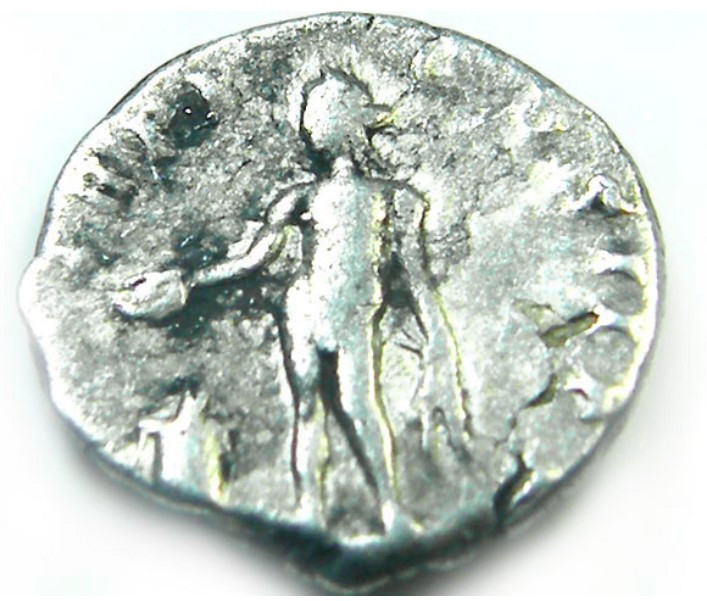
Roman Coins are easily accessible, especially on www.Coins-Auctioned.com where new pieces are listed every week. As the Roman Empire spread over such a vast area, coins have been, and are being, discovered all across Europe and North Africa. Roman Coins have also been found much further afield due to international trade.
For collectors in Europe, it’s relatively easy to find nice pieces to add to your collection and they can be (not always) relatively inexpensive. There is a very strong collector base for Roman Coins in Europe as it is an important part of the local history. For collectors that are in countries that weren’t occupied by the Romans, such as Australia and the USA, finding the pieces you want and at the right price can be a little more difficult, especially considering many have to come from abroad.
Dealing in Ancient Artifacts does have more restrictions globally than other areas of coin collecting. Some countries do not allow ancient coins to be exported, especially if found within their borders as it becomes a national heritage concern. Other countries have strict rules about what happens when coins are found. The advance in technology for Metal Detectors has greatly increased the opportunities for Ancient Coin collectors.
At Coins-Auctioned.com, there is a strict policy on what can and can’t be sold that all sellers have to comply with. This offers you their guarantee that any Roman coin offered for sale complies with local and international laws. It is important to ensure you are able to import Ancient Coins before attempting to buy from abroad.
If you decide to start a Roman Coin collection, having found a good supply, you need to think about how you want to start. Are you going to acquire pieces that you like the look of? Are you going to start by Ruler, Denomination, or area? There are many choices and routes, but you need to start with what catches your eye first.
How about these for a few ideas;
If you start by collecting a specimen of all the nominal values from the 1st Century to 2nd Century, you would need to find two gold coins; an Aureus and a Quinarius Aureus, two silver ones; the Denarius and the Quinarius Argenteus, and five bronze ones; the Sestertius, the Dupondius, the As, the Semis and the Quadrans.
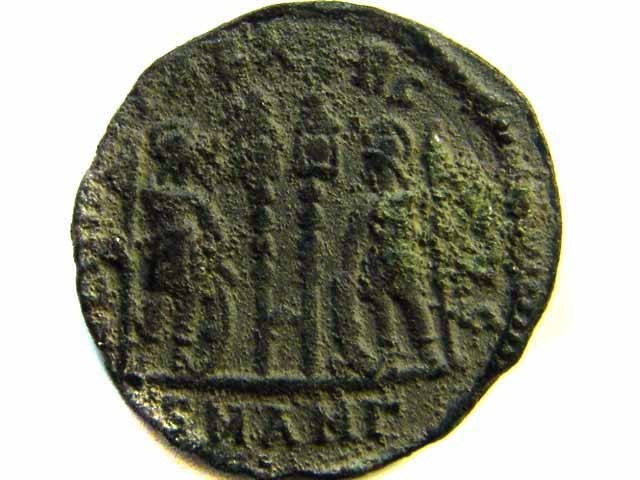 But to complete this small collection you will need some serious money, finding an Aureus below $2,000 US is almost impossible as they are usually traded between $4000-$6000 US). A decent Denarius can be found from $20 to $200 US, but can be more for rarer types or higher quality examples. The Sestertius can also be a little on the high side at around $100-$200 US, sometimes a little less. Other bronze coins are generally easier to find.
But to complete this small collection you will need some serious money, finding an Aureus below $2,000 US is almost impossible as they are usually traded between $4000-$6000 US). A decent Denarius can be found from $20 to $200 US, but can be more for rarer types or higher quality examples. The Sestertius can also be a little on the high side at around $100-$200 US, sometimes a little less. Other bronze coins are generally easier to find.
Availability can sometimes be an issue. In Germany, it’s fairly easy to find Silver or Gold coins in the numismatic market. Why? Because the Roman Empire paid the German population large sums of money as they employed them as soldiers and workers. Because the sums paid were larger than the general goods for everyday life, they were paid in Gold and Silver. It is harder to find bronze coins here though. Large amounts of Bronze coins were very cumbersome to transport long distances, especially when considering the size of payments to be made.
In France you can find nice bronze coins or even silver but gold coins are very rare, the same is true of the UK.
How you start and develop your collection will depend on the funds you can dedicate to it. It may be that you decide to collect only one particular type of coin, such as silver Denari, or maybe bronze Sestertius. The bronze Sestertius is an attractive option as it’s a larger coin, around 27 grams and 25-35mm in diameter. This size allows for some detail to be captured in the design and they make great display specimens.
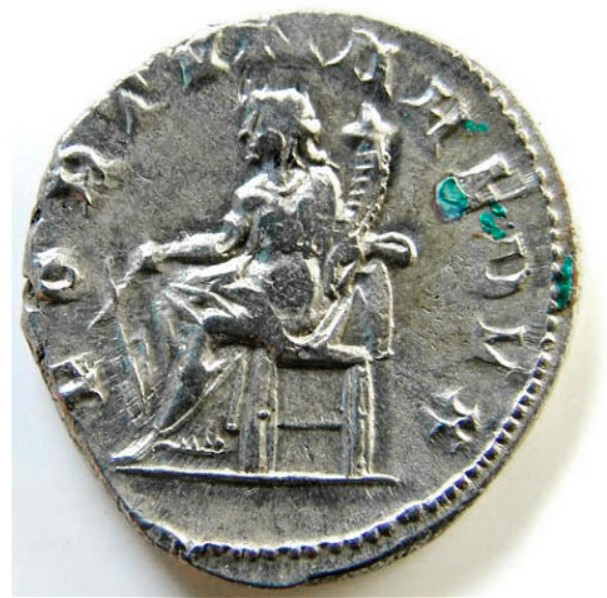 A collection could start by finding an example from each Emperor from Augustus to Romulus Augustus (27 BCE to 476 CE). It’s a challenge to find them all as there are many. Coins from some emperors are very rare such as Otho (69 CE), Vitellius (69 CE), Pescennius Niger(193 CE) and others due to their very short reigns. In some cases cases are almost impossible to find, like Julian of Pannonia (285 CE) or Valerius Valens (316 CE).
A collection could start by finding an example from each Emperor from Augustus to Romulus Augustus (27 BCE to 476 CE). It’s a challenge to find them all as there are many. Coins from some emperors are very rare such as Otho (69 CE), Vitellius (69 CE), Pescennius Niger(193 CE) and others due to their very short reigns. In some cases cases are almost impossible to find, like Julian of Pannonia (285 CE) or Valerius Valens (316 CE).
Some collectors focus on the coins from one dynasty such as the Julio-Claudian dynasty (14-68 CE, Tiberius, Caligula, Nero) or the Severian dynasty ( 193-235CE, Septimius Severus, Caracalla, Geta, Heliogabalus, Severus Alexander).
You can also decide to collect the coins minted for the emperor’s wife, mother, daughter, father and so on. Some people collect these emperors starting from ancient sources. For example, Suetonius Lives of the twelve Caesars , describing the lives from Caesar to Domitian.
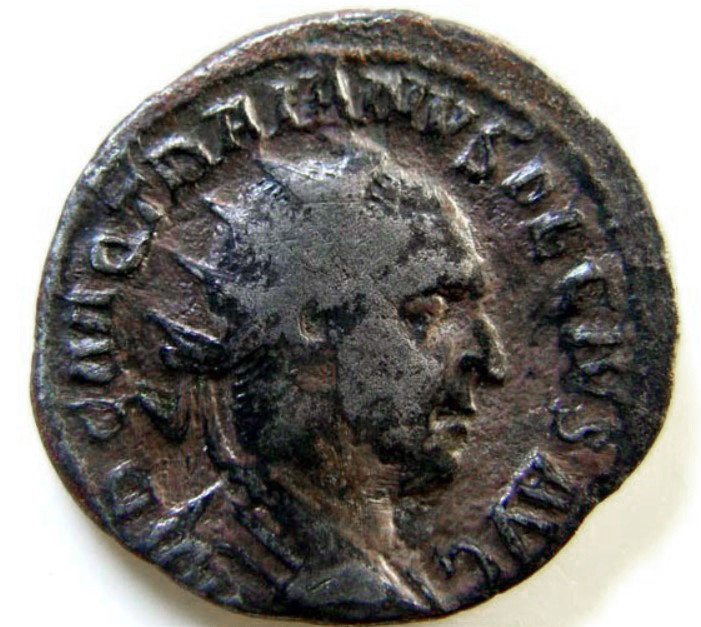 Another theme of collecting that is very popular, are the coins with the emperor on one side and a member of his family on the other. The perfect coin of this type is an Aureus minted during the reign of Septimius Severus, with a reverse showing the face of Julia Domna, his wife, and their two children on each side, Caracalla and Geta.
Another theme of collecting that is very popular, are the coins with the emperor on one side and a member of his family on the other. The perfect coin of this type is an Aureus minted during the reign of Septimius Severus, with a reverse showing the face of Julia Domna, his wife, and their two children on each side, Caracalla and Geta.
The Consecratio types, minted to commemorate the death of a recently departed emperor. These usually depict the emperor being carried away by an eagle (Jupiter’s Eagle, representing a journey to the gods) or on an altar, are also an option.
Many Roman Coins have a depiction of a Roman God or Goddess. These make for an interesting collection theme. You can base an entire collection on a particular Deity, for example, Cybelle, the Mother of The Gods,, Venus the goddess of love, or Mars the god of war, or Minerva the goddess of wisdom and so on.
Collecting based on Gods and Goddesses can open your eyes to the world of Roman Mythology and the particular traits and characteristics of each deity. Being able to spot particular identifying features such as Minerva’s Helmeted profile along with spear and round shield, sometimes she is depicted with an Owl, but not to be confused with Nox, Goddess of the night.
Fortuna, goddess of fortune, is shown with a rudder, representing guidance and a cornucopia, a symbol of wealth. She is shown either sitting on a throne or standing looking to one side.
Usually rare, in some cases the goddess is a personification of a defeated enemy. A woman that appears on the Trajan series of coins with the legend DACIA CAPTA (the conquered Dacia) is the personification of that province.
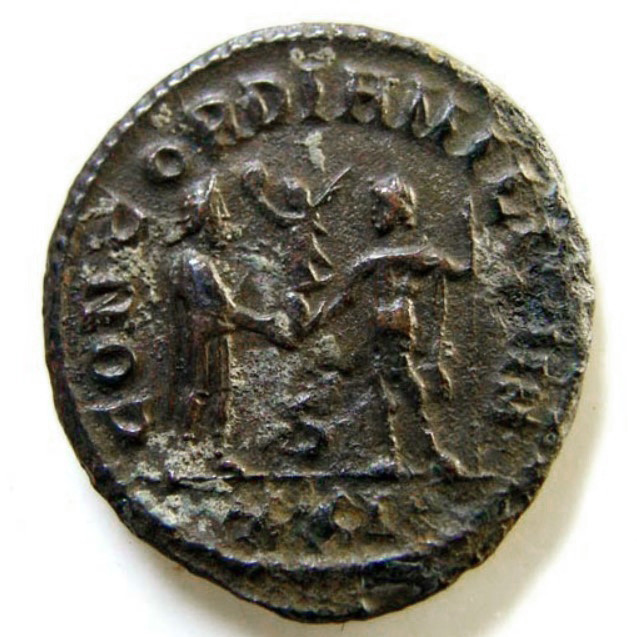 On the reverse military scenes can appear, weapons taken from the prisoners, like a Sestertius of Antoninus Pius, showing some ancilla , particular shields.
On the reverse military scenes can appear, weapons taken from the prisoners, like a Sestertius of Antoninus Pius, showing some ancilla , particular shields.
Or maybe scenes with the emperor, in religious moments, like sacrificing before an altar, political scenes, addressing troops (ADLOCVTIO AVGVSTI) or the Senate, or military examples.
Counterfeits, Fakes and Reproductions.
Since money was first invented, fakes and counterfeits have been made. There has always been a desire for people to buy things for less and counterfeits were a way to do this. Much later on, when coins from the past became collectible, counterfeiters switched to making reproductions of ancient coins.
One of the most famous counterfeiters of ancient coins was a German by the name of Carl Becker. Becker was counterfeiting ancient Greek and Roman coins in the early 1800’s alongside his usual business of dealing in genuine antiquities. Even by today's standards, his creations are considered masterpieces, in some cases almost impossible to tell from the genuine articles. Some of his work is more valuable than the coins he was imitating.
With advances in technology giving counterfeiters more tools to work with, and the ever increasing prices of genuine pieces, there is a huge incentive for fakes to be made. Some of these fakes are a big concern for the numismatic community. Fakes from the Bulgarian school are almost perfect in some cases. Chinese fakes are starting to be more accurate than ever. Only with time and experience, these fakes can be avoided.
But in the end, you will decide what you want to collect. And even if you know that the collection will never be finished, as all the coin collections, the satisfaction will still be great when you add a new beautiful piece to it.
 SHOP FOR ANCIENT ROMAN COINS HERE
SHOP FOR ANCIENT ROMAN COINS HERE
Was this article helpful?
1 person found this article helpful
Coins Auctioned
- Written - 20th Jan 2011
- Edited - 6th Sep 2023






















